
Corvette. It’s a name that stands apart in America’s automotive history, shorthand for a unique take on the sportscar genre. It’s a model that has always trod its own path, often forging ahead into uncharted territory for American cars and remaining obstinately uncluttered by national tradition or dogma. Corvettes have been muscle cars that never really adhered to the traditional muscle car ethos and performance sportscars that didn’t follow the European performance sportscar doctrine in either engine or styling. Corvettes have always been unmistakably, well, Corvettes.

Compared to other evocative brands, Corvette has stayed true to its original ethos throughout its 60 year history. Two seats. Rear-wheel drive. Engine up front – which except for the first model would, and will likely always, be a V8.
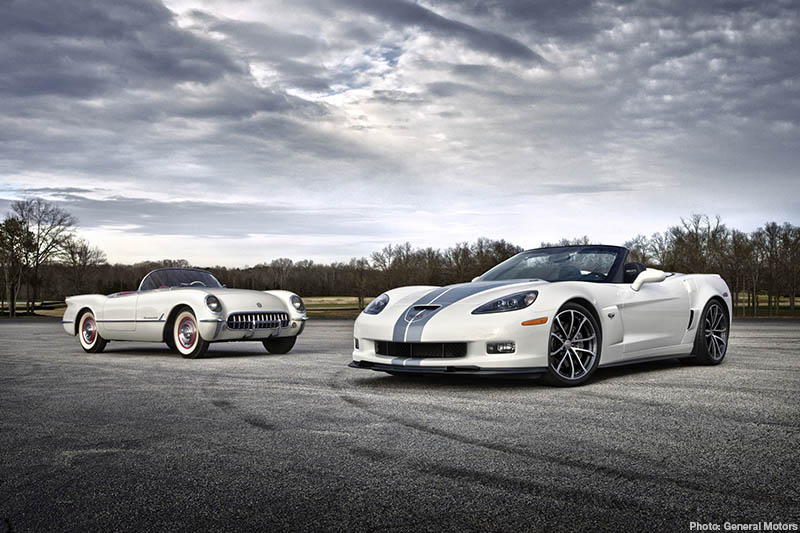
So how was the Corvette born? After the Second World War, the behemoth that was General Motors had put all their efforts into cranking out purely functional, entry-level cars for a population with an insatiable appetite for the automobile. Sleek European sportscars had begun to make their way across the Atlantic as that continent’s industry slowly began to revive, but the prices meant the choice between a car or a house for most people: not a difficult decision for the majority.
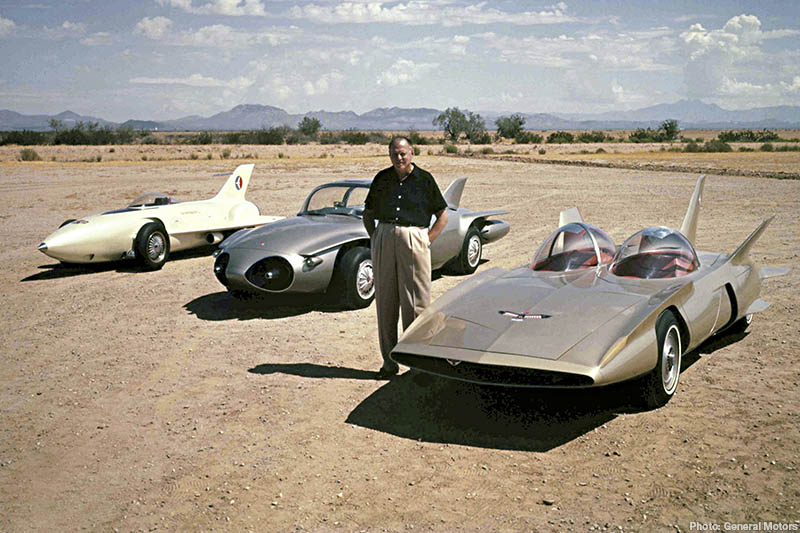
Where was the American equivalent to these imports? It’s not like there was a lack of excitement about speed or racing: the ’50s saw hot rods and dragsters in abundance and the elevation of the Indy 500 to televised national treasure. American cars had competed at home and abroad for just as long as their European competition – but mostly the cars were privateer specials, built and run by independent teams. The new impetus from within GM came courtesy of its head of design, Harley Earl, the Jonathan Ive of his time who revolutionised the industry’s approach to styling and was the grandfather of the concept car.
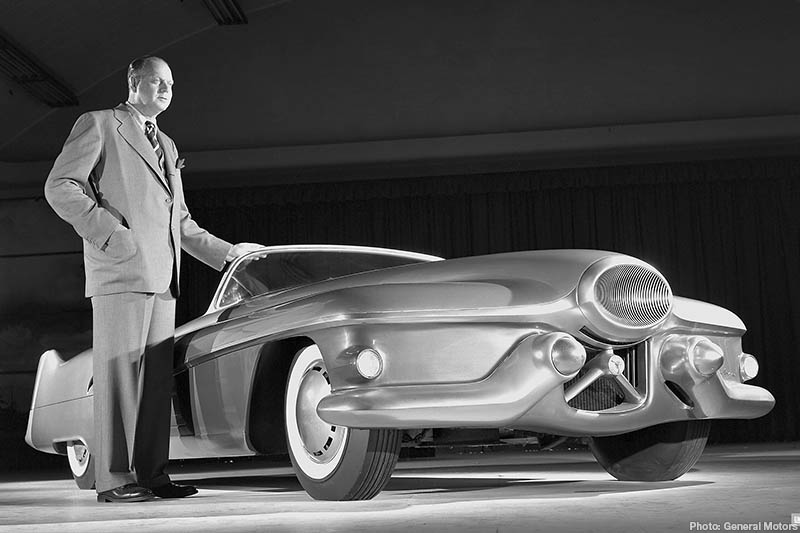
Having carved his niche in the inter-war years, once the Second World War had ended Earl and his team began work on Project Opel: a skunkworks plan kicked off in 1951 to develop a competitor to the influx of European performance cars. The team attended international races and car shows, and even bought in a Jaguar XK120 to dissect, gathering data for what would become the Corvette. That racing influence would run deep and has remained with Corvette to this day.
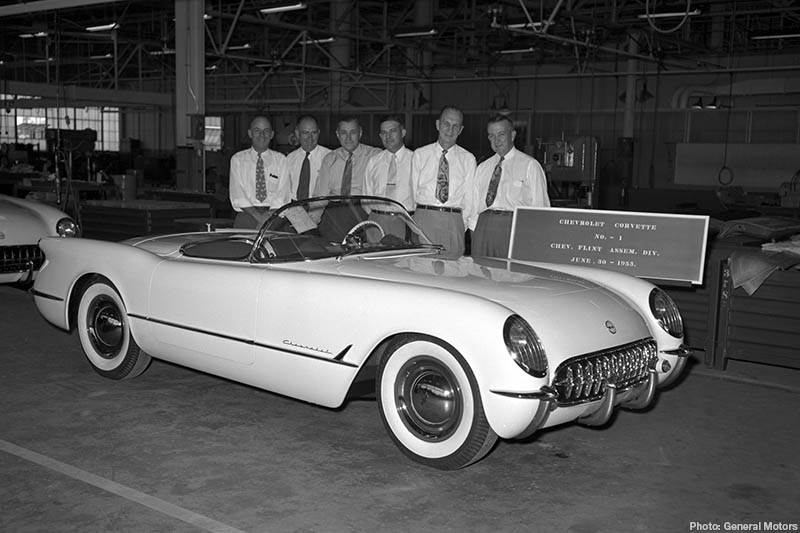
Although this was still theoretically just a project, the team worked on every minute detail, convinced from the beginning that they could persuade the board to put the car into full production. They were not wrong. In the summer of 1952, the car was shown off to the executive, whose support was immediate. Pre-production was signed off, and Project Opel now needed a release name. Hundreds of possible titles were discarded before they settled on the final choice: Corvette, named after a light and manoeuvrable Royal Naval warship.
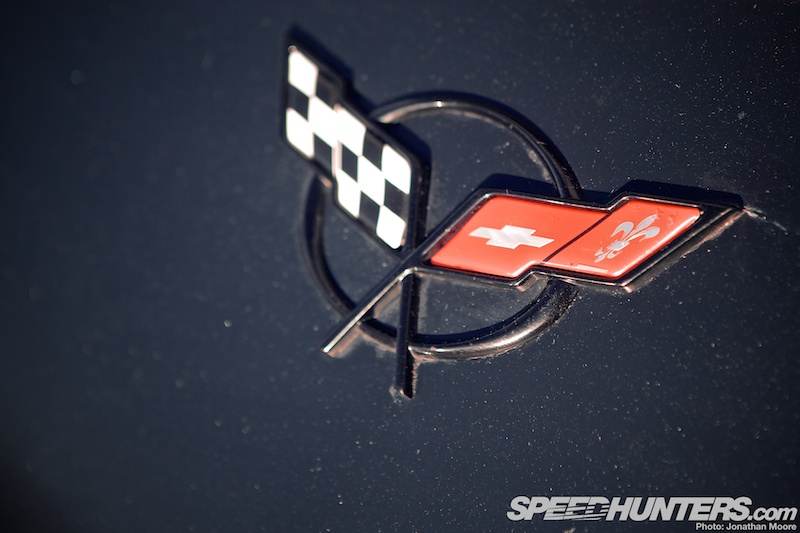
The famous cross-flags emblem was also designed especially for the new car. This originally utilised the Stars & Stripes along with a chequer, until the team realised that they’d break Federal law: the flag isn’t allowed to be used in any kind of advertising context.

So, founding father Louis Chevrolet’s ancestry was used, and the French fleur-de-lys chosen instead. The exact design has frequently changed over the decades.
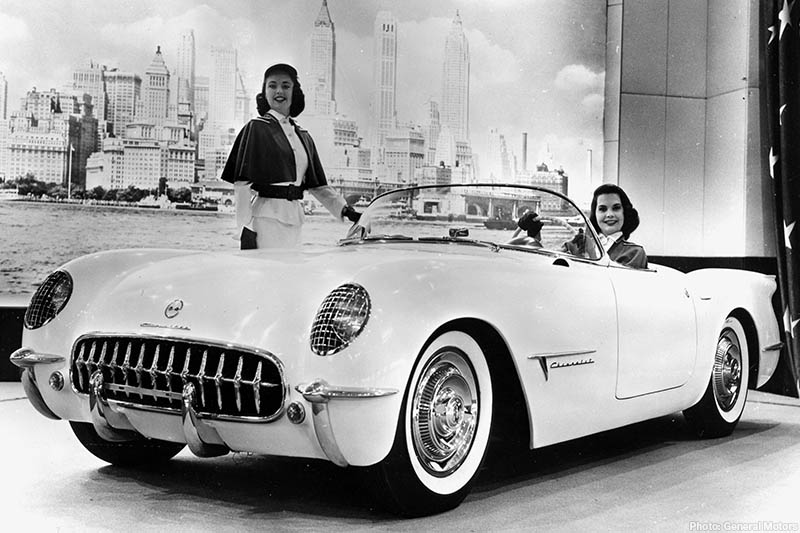
The Corvette’s initial six-cylinder engine was taken from one of Chevrolet’s modest sedans (GM’s other divisions were reluctant to release a V8 to this upstart project), the transmission a slushy automatic and the suspension still used solid axles. But the bodywork was fibreglass and lightweight, and the rakish shape oozed class. Long, low and lightweight, the Corvette wowed the crowds at New York’s Motorama show in 1953, and the Corvette publicity machine went into overdrive. The show car travelled the breadth of the country, garnering more and more adulation. It was time to put the car into production.
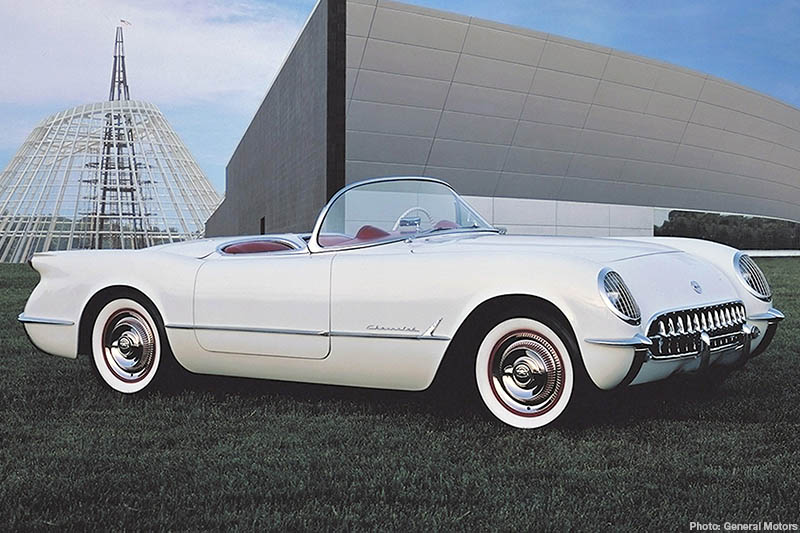
Inevitably, the reality of manufacturing this new car took their toll, and the final selling price was almost equivalent to the Jaguar competition – twice what they been hoping for. Still, the car seemed to fly off the forecourts: with an initial run of just 300 cars for 1953, the waiting list immediately stretched out past a year for expected delivery and everything seemed positive. But Chevrolet had overestimated the market, increasing production into the thousands in 1954 – and the truth hit home. Reviews began to turn negative. Much as the potential was there, there was definitely not the mass market they had hoped for, and a significant percentage of Corvettes remained unsold.
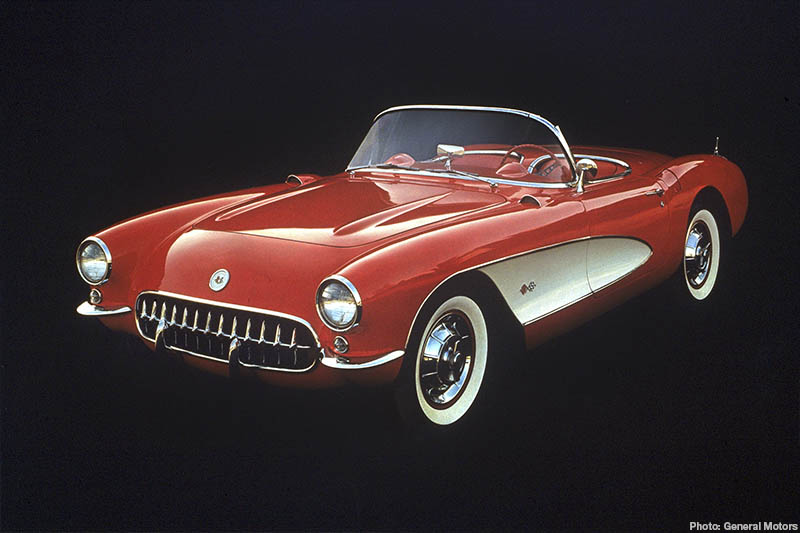
The team went back to the drawing board. Zora Arkus-Duntov came on board as Director Of High Performance and pushed hard for the company to pay more attention to the emerging youth and hot rod cultures. Chevrolet developed their own new V8, the bodywork was given a facelift for 1956 and the price substantially reduced.

Duntov also kickstarted the Corvette’s official competition career, driving tuned ‘Vettes himself in speed trials at Daytona and taking on Ford’s rival sportscar, the Thunderbird, at classic races like the 12 Hours Of Sebring. The team learned fast, and by 1956 Corvettes were regularly winning championships, despite the factory pulling out of official programmes. That factory withdrawal, as usual, didn’t quite filter through to the Corvette team, who surreptitiously continued to help develop racers for privateer entrants such as Briggs Cunningham. Four Corvettes raced in traditional US white with blue stripe liveries at the Le Mans 24 Hours in 1960, with the #3 car finishing eighth overall and taking the GT5000 class victory.

Performance options and tuned parts were also offered for road cars, and speeds rose. The Corvette was beginning to get some teeth. 1957 is seen as the revolutionary year for the car, when it truly came into its own, with the V8 now putting out well over 280hp in its highest spec, using – shockingly – fuel injection. The Corvette continued its evolution over the next couple of years, leading to the Second Coming.
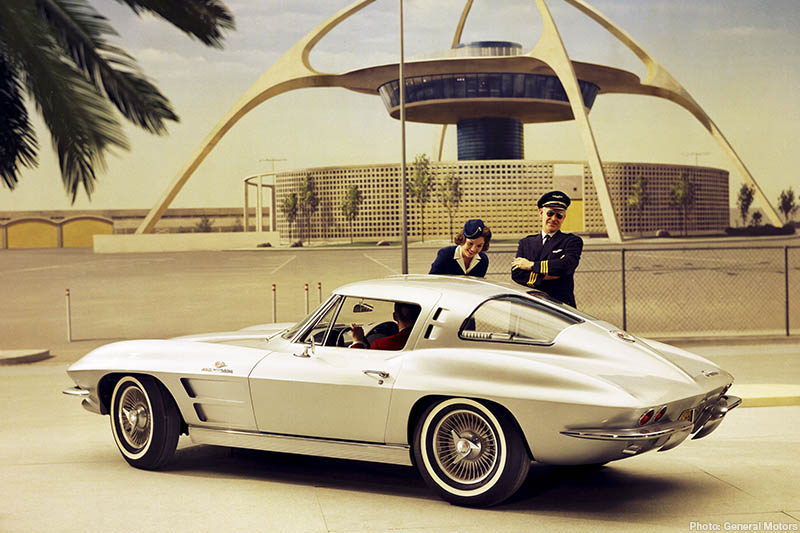
The second generation Corvette introduced in 1963 is still one of the most iconic cars ever made. Produced for just four yeas, the design was sharp and aggressive: the new Corvette Sting Ray oozed individuality.
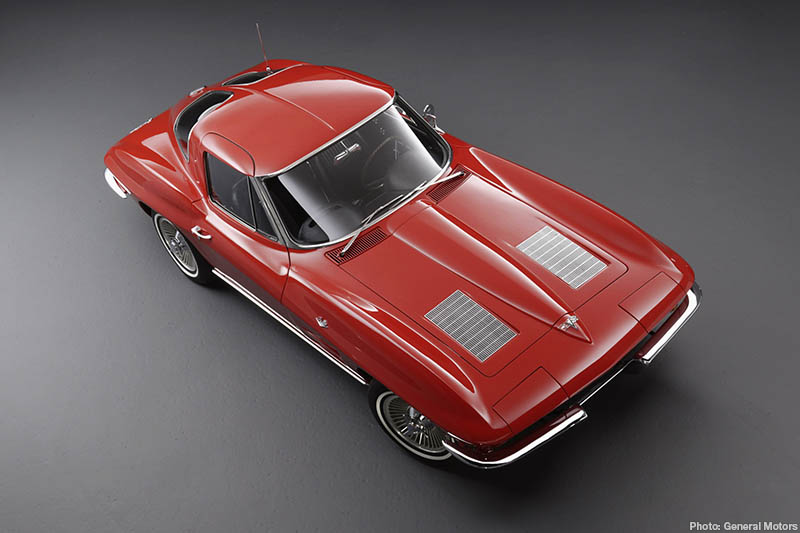
The split window rear; the high waist line and pointed nose; the long, tapering tail styling; the pop-up headlights: these all ticked the aesthetic boxes. A thumping 6.5-litre V8, independent rear suspension and disk brakes made sure that the Sting Ray performed as well as it looked.
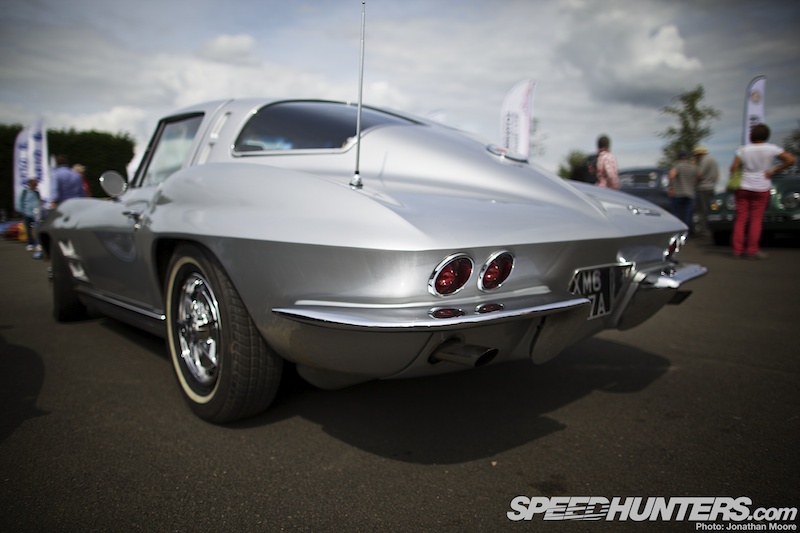
More options were introduced (including the Z06 ‘special performance’ package, air conditioning and larger fuel tanks), though just a year after its introduction the split window was ditched in favour of a full wraparound screen.
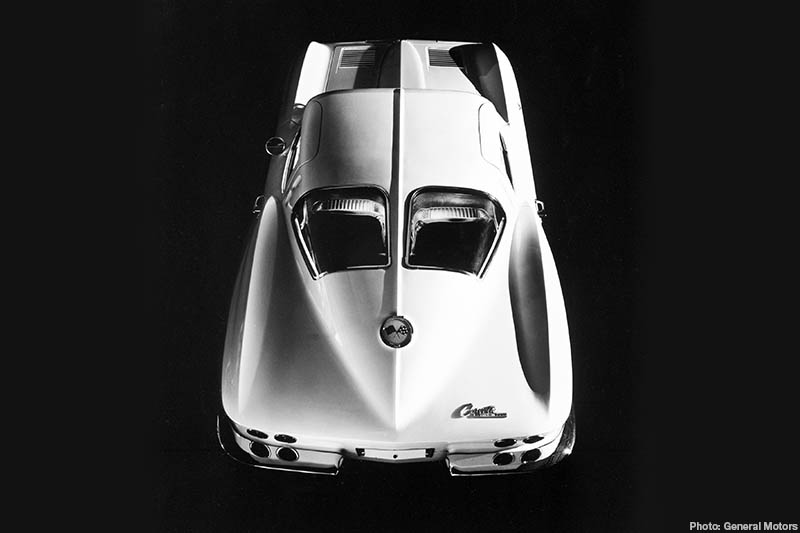
The short-lived second-gen model saw Corvette fanaticism explode, and the cars going from being merely good to great. Options were the name of the game, with the idea that there should be a Corvette to suit every budget.
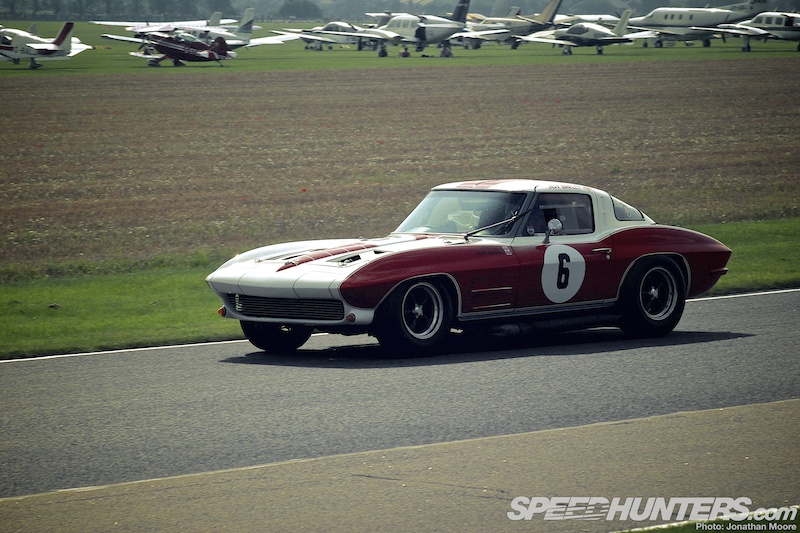
The Corvette dominated domestic racing in the decade, whether on the track or the drag strip. The factory also returned to race, taking on the new Cobras – though that overt support was always on and off throughout the car’s history.
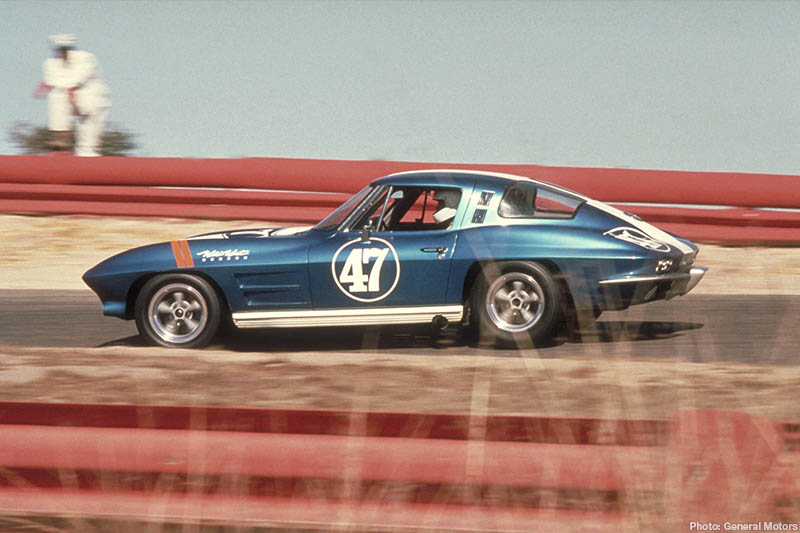
The Corvette team were locked in a constant war with the management: Corvettes usually raced despite executive buy-in rather than because of it.
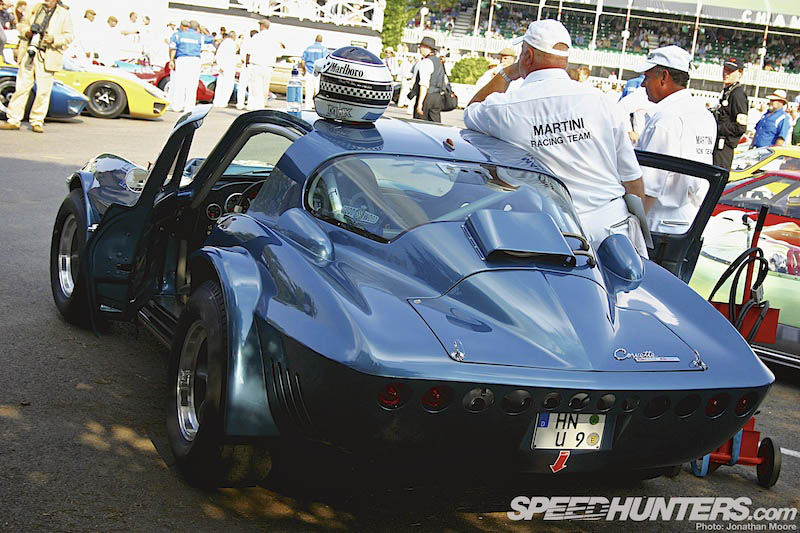
The Grand Sport lightweight coupés were glorious beasts: beautiful and brutal at the same time, built in secret and with no handling to speak of to balance the rocket power of the V8, the programme was unsurprisingly discovered by GM’s execs. One car was ordered to be burned; the remaining cars were rushed off-site and hidden!
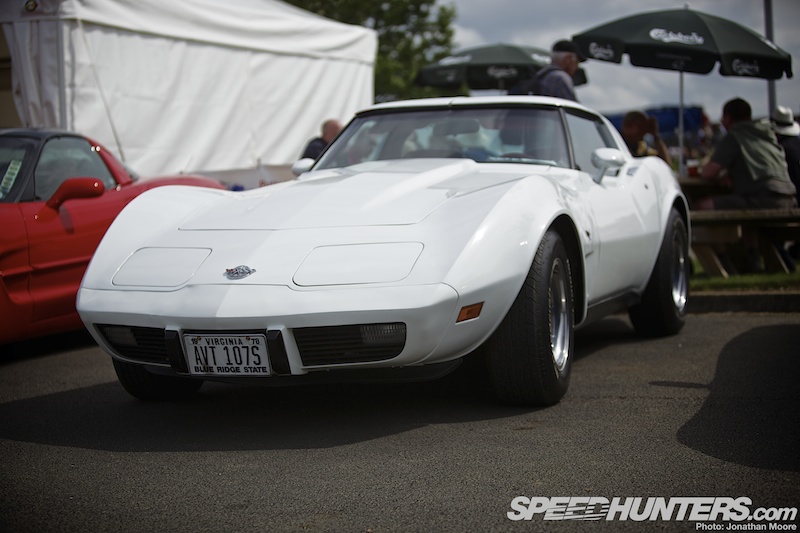
1968. Following concept cars that more resembled the softer lines of something like a Ferrari, it was the shovel-nose brute force of the C3 that emerged.
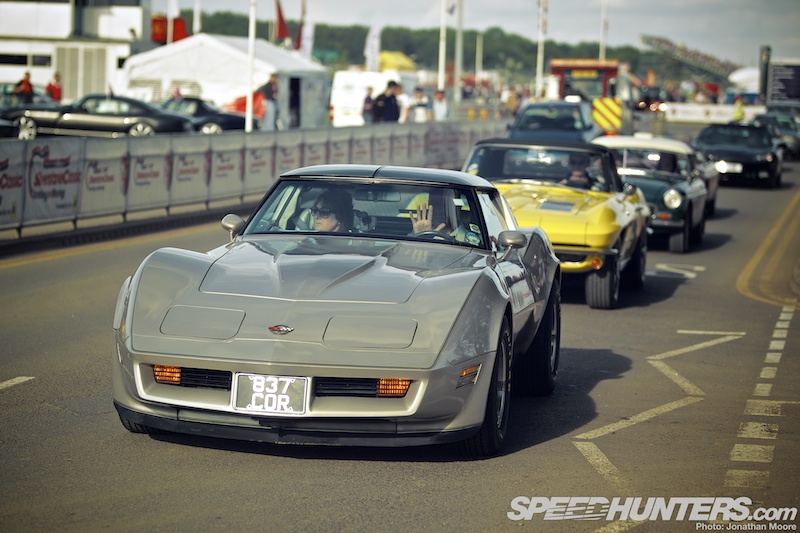
The nose treatment retreated and softened during the C3’s 14-year lifespan, becoming less pronounced from the arrow shape of the launch car. In 1976, the Corvette was temporarily only available as a coupé, for the first time since the model’s launch in 1953.
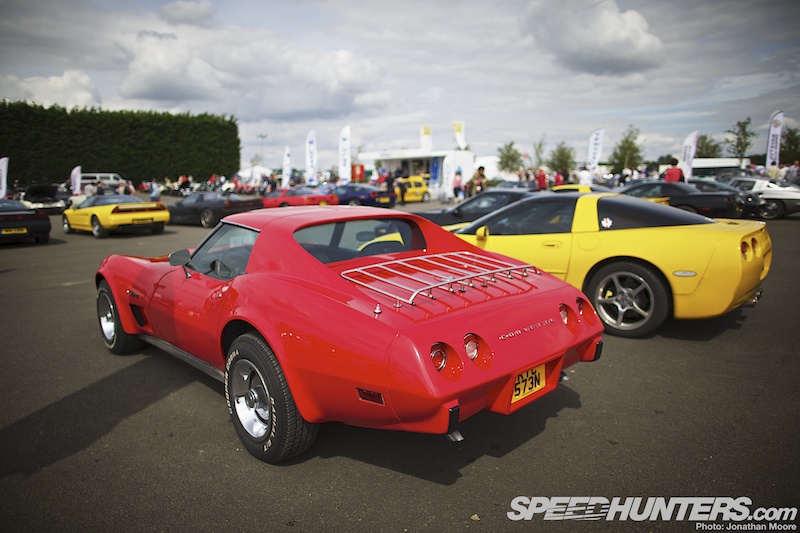
By now, everyone wanted a Corvette: here are the Apollo 12 astronauts with their trio of C3s.
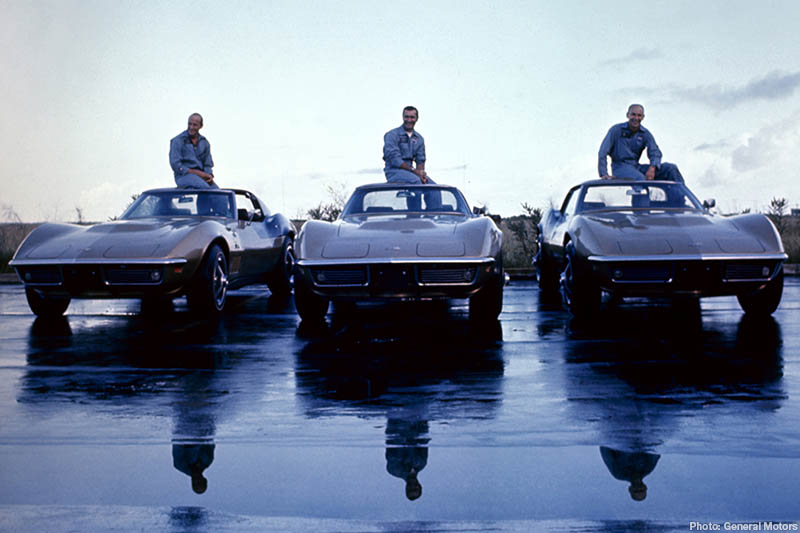
The C3 is a surprisingly compact car in real life, an effect further exaggerated by the big wheels on the more extreme models. It has a real custom feel to it, with a down-low seating position and those big raised fenders along a nose that stretched to the horizon.
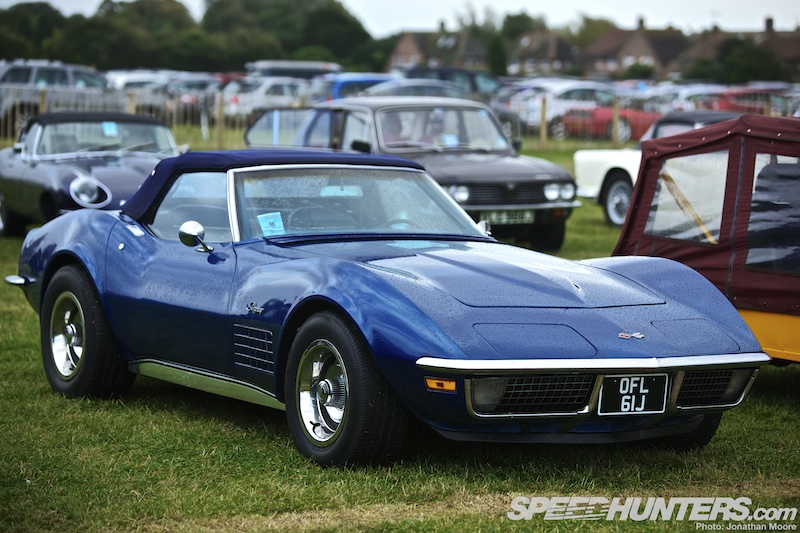
As the car got lower, the V8 just kept getting bigger: 425hp was available from the top-of-the-range 454 cubic-inch LS6 option. That said, government legislation neutered engines to a large extent, forcing companies like Chevrolet to limit compression and power: by 1974 the 350 cubic-inch engine put out a measly 195hp, and big block engines were close to being killed off.
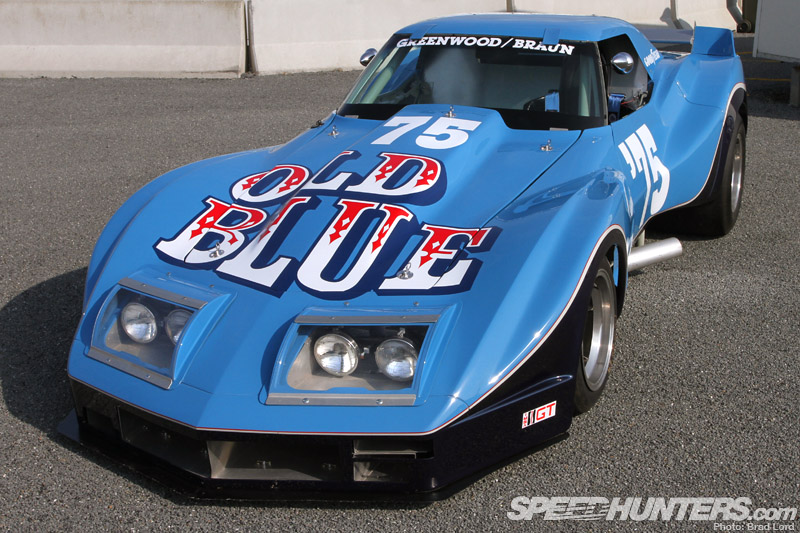
Racing Corvettes got even meaner, and none more so than the Greenwood IMSA-class Corvettes, which raced both domestically and at Le Mans. The fenders were so far outboard as to be in a different state, and the noise had to be heard to be believed. The thunder of the Stars & Stripes in metal form.
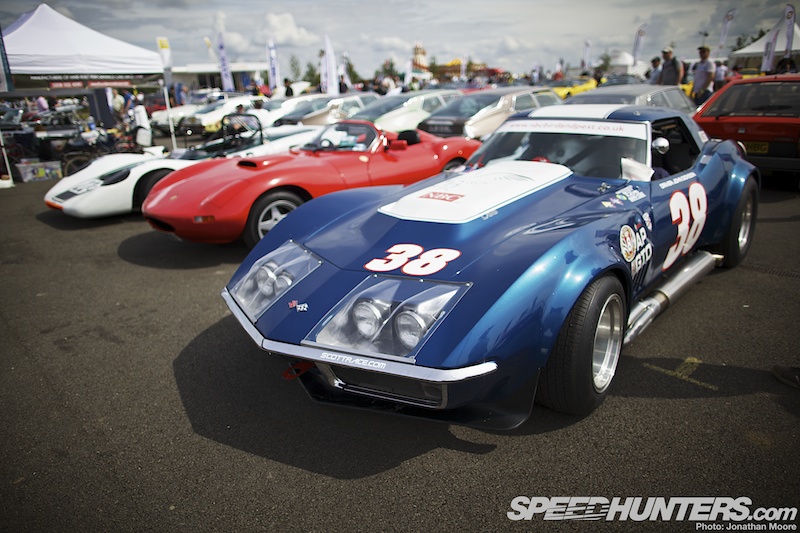
Corvettes competing in IMSA were hardly less impressive, built to take on and beat the Porsche 911 impostors.

To celebrate the Corvette’s 25th anniversary in 1978, the car was nominated as the official pace car for the Indianapolis 500, starting a run of special edition Pace Car replicas offered for the road over the generations.
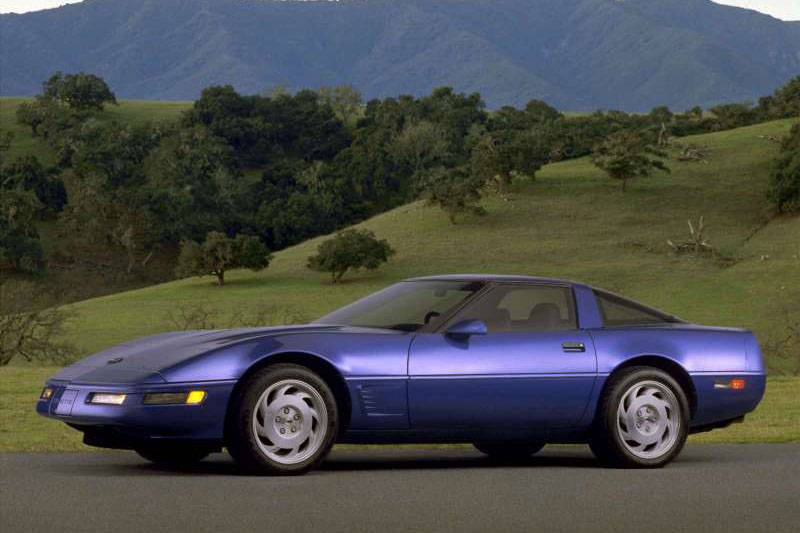
The modern era begins in 1983 with the introduction of the C4, the first ground-up redesign for 20 years. Having survived the regulatory nightmare of the ’70s, Corvette emerged into the ’80s with a far cleaner, simpler design, but it was still clearly a Corvette: a long nose and those quad tail-lights saw to that.

The changes weren’t just skin deep: advances in technology allowed the designers to utilise a unibody construction, with a low-profile roofline and stiffer chassis. Radical things like a change to mid-engine and even turbocharging were considered, but the C4 ended up sticking with the tried and test formula.
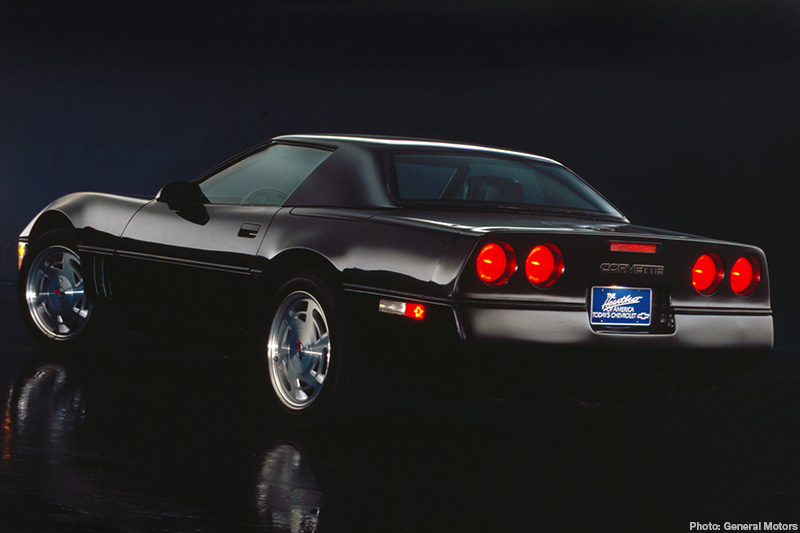
New ideas like an LCD dash were on the initial models, but traditionalist backlash meant that the overly modern approach was toned down. Still, this was undoubtedly a modern car and a true competitor for the European sportscars that still nibbled away at the high-end US market.
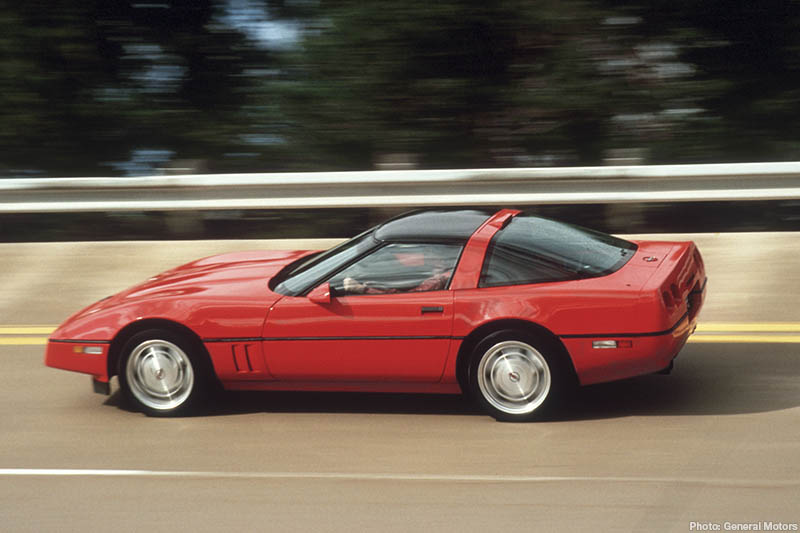
A convertible option was reintroduced in 1986, and tuner Callaway burst onto the scene with their B2K Twin Turbo Corvette, basically forcing the factory to up its game with their performance option, the ZR1, which was also the first C4 to have any serious horsepower at its disposal.
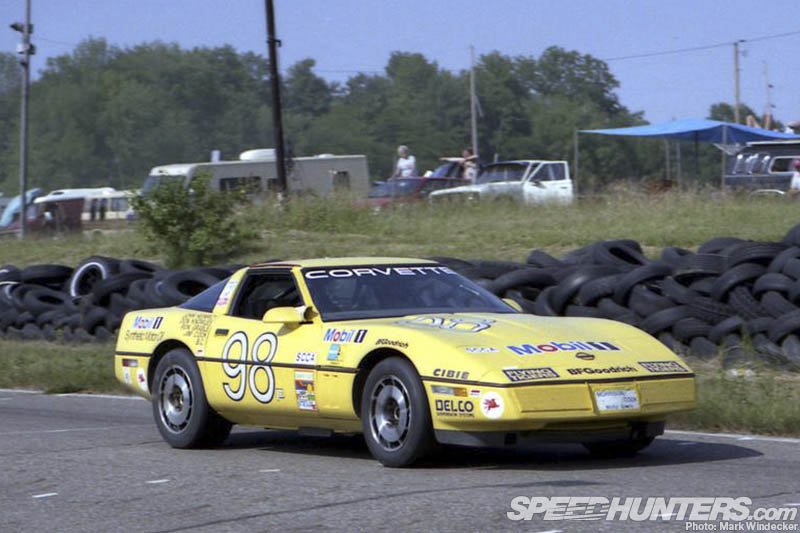
Naturally C4s raced successfully…
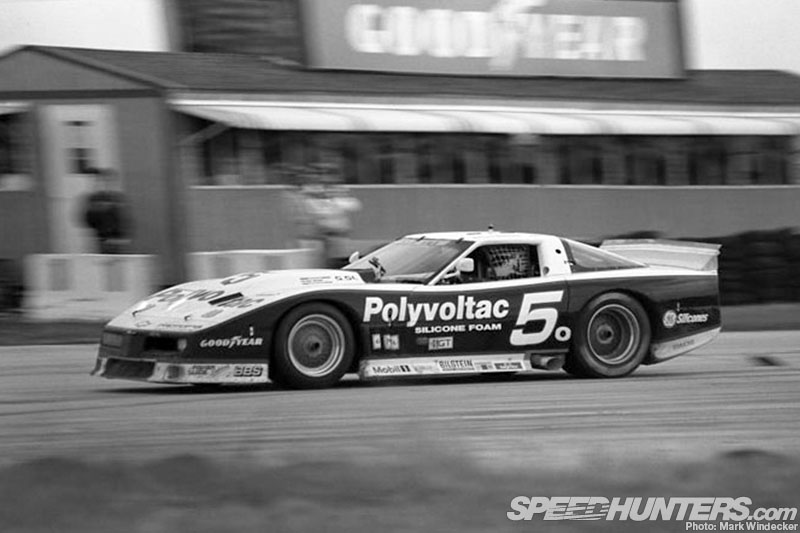
…also morphing from this GTO version into the awesome Lola-designed, wide-body, turbocharged GTP-class IMSA racers, driven by such luminaries as Bobby Rahal and Doc Bundy. However, the GTPs were more successful visually than they were on track: mechanical problems plagued the team’s efforts between 1985 and 1989.

The C5 was introduced in 1997: low-drag and more rounded in design, with that clean and curvaceous cut-off tail framing the four round tail-lights, it was another complete platform change. The engine and transmission were separate for the first time with the use of a rear transaxle, and the new aluminium-alloy engine and drivetrain was matched with an advanced steel-frame chassis construction. The wheelbase was lengthened and there even a trunk available if you took up the convertible option.
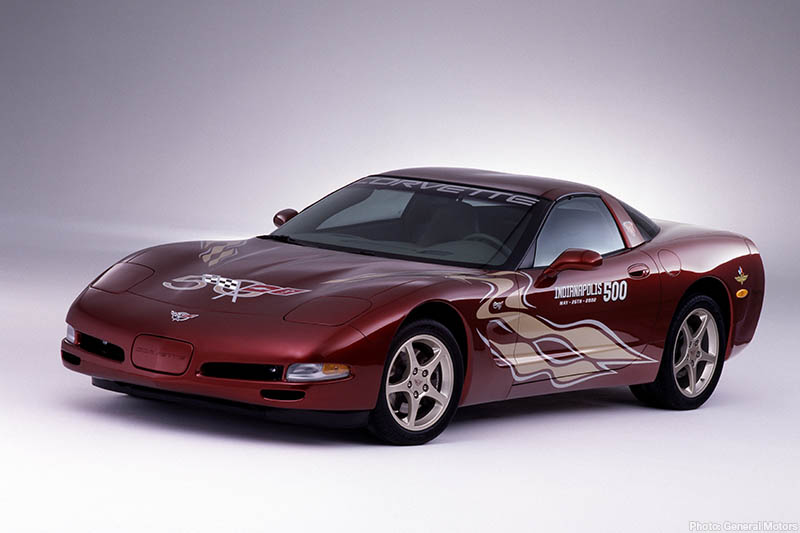
The 2001 Z06 was the performance monster of the family, pushing out 405hp from its LS6 engine by the 2002, the fastest ever production Corvette to that point. More special editions were released as well: the 50th anniversary with uprated suspension…
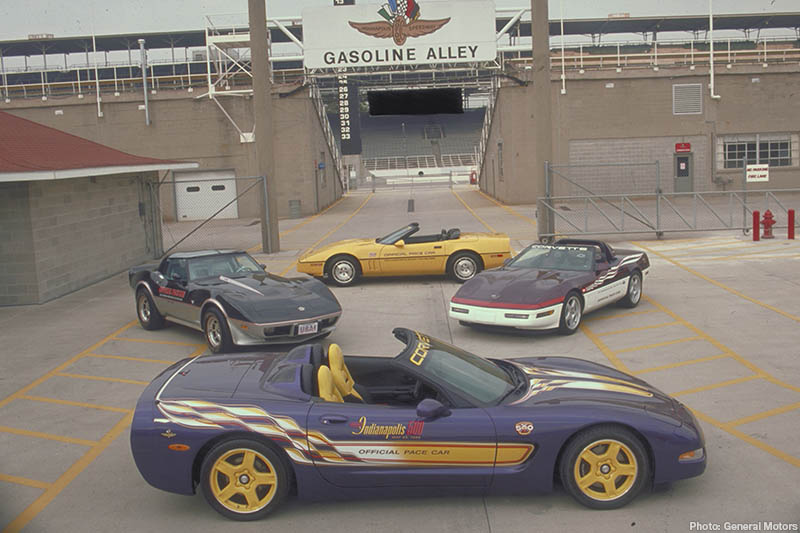
…and the latest iteration of the famous Indy Pace Car replica.

The 2000s saw Corvettes consistently compete and win in GT racing, with a C5-R even winning the Daytona 24 Hours overall against prototype opposition in 2001. From there the C5-R took up from where fellow American track-thug the Viper had left off and dominated GT1, with multiple wins at blue riband endurance events like Sebring and Le Mans. The team won the GT class at Le Mans in 2001, ’02 and ’04 and the American Le Mans Series GT class three years in a row starting in 2002.
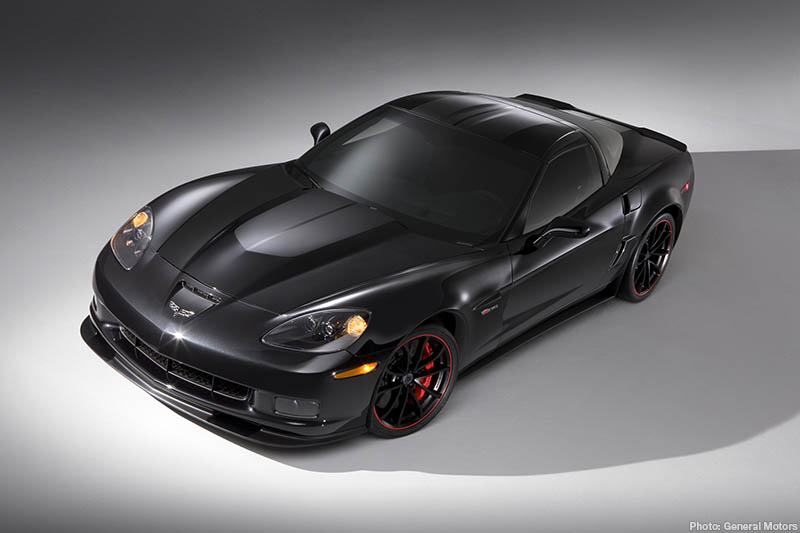
Further design refinements led on to the C6 in 2005, which represented the brand well for eight years. The engine and transmission were carried across, but the styling was revised and exposed headlights reintroduced for the first time 1962.
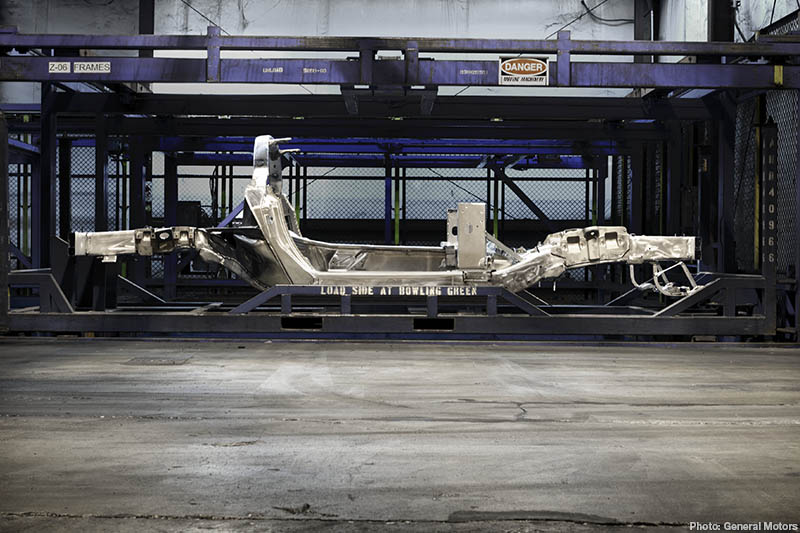
Heretically modern concepts continued to be used by the Corvette team, walking that line between American practicality and European style. Aggressive, affordable pricing has always been an important factor for Corvette, and the C6 maintained that approach, whilst easily keeping up in performance terms with far more expensive rivals.
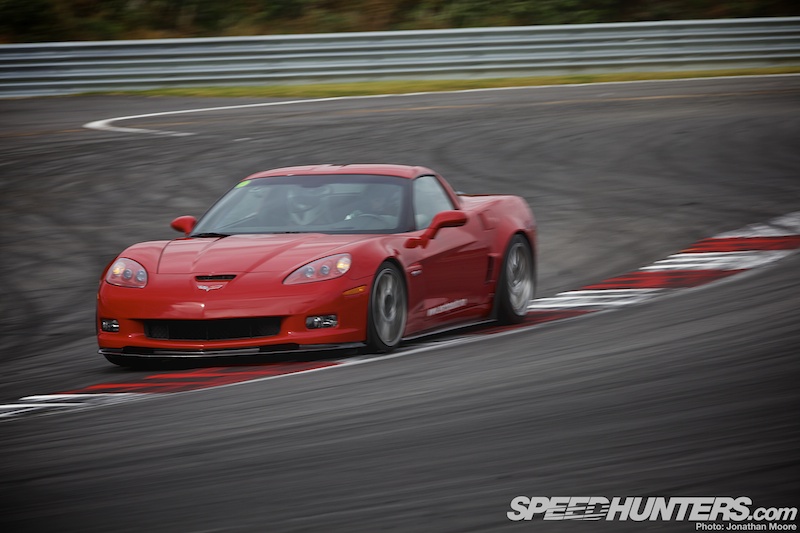
Up to 2008, the C6 was available in six main variations (Coupé, Convertible, Indy 500 Pace Coupé, Pace Convertible, Z06 and 427 Limited Edition) but more special models were subsequently released, like the Ron Fellows ALMS GT1 Z06 and the all-conquering new ZR1.
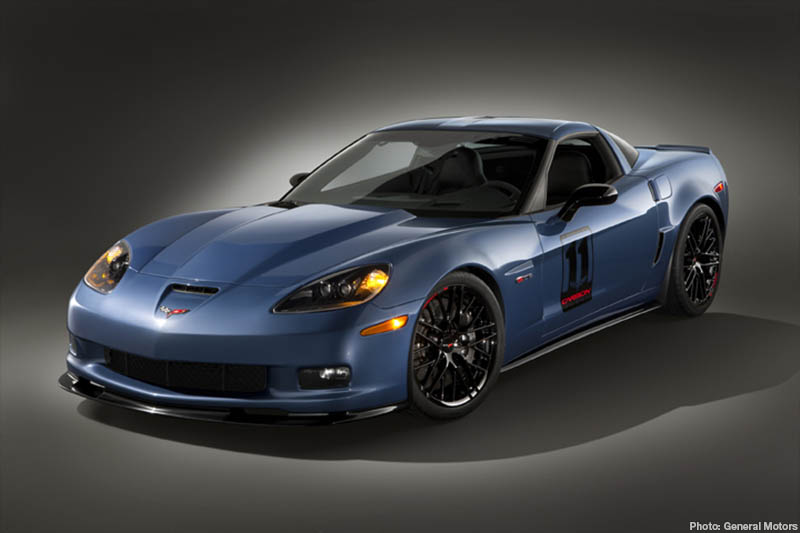
That ZR1… with 638hp from its Roots-style supercharged 6.2-litre LS9 V8, it put the Corvette up on a par with any of the new generation of supercars on offer. The lightweight Z06 was no slouch either, with a 7-litre dry-dumped LS7 small-block V8 pushing out 505hp.
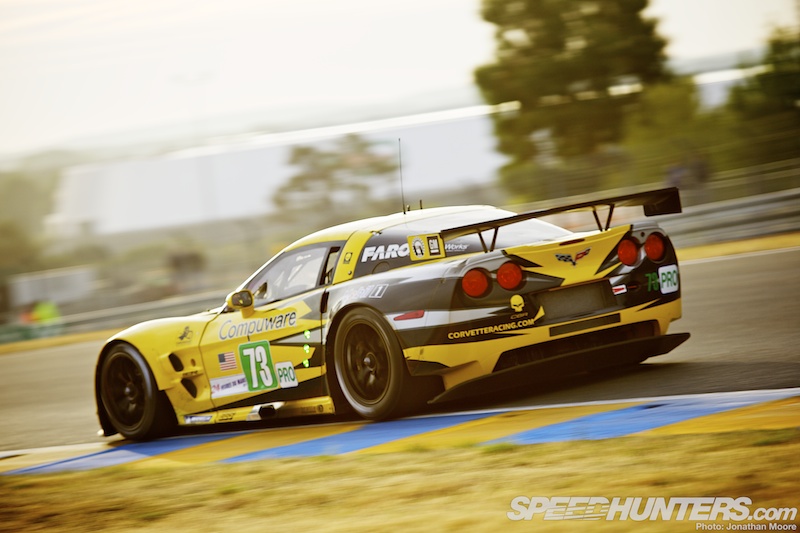
The C6.R racer picked up where the C5-R had left off on track as well, hoovering up yet more wins and podiums at home and abroad.
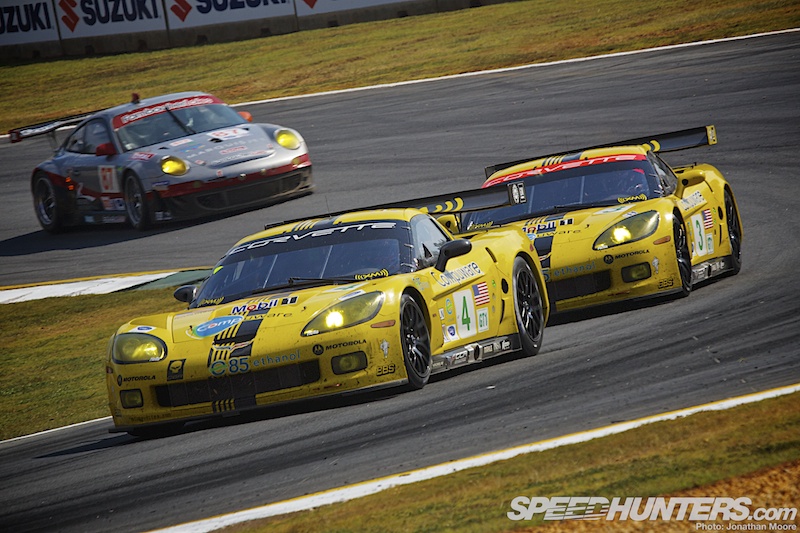
Another four GT1 class wins at Le Mans fell to Corvette in 2005, ’05, ’09 and ’11, and the cars utterly dominated the ALMS, winning the championship four times in a row from ’05 to ’08 and then again in ’12.
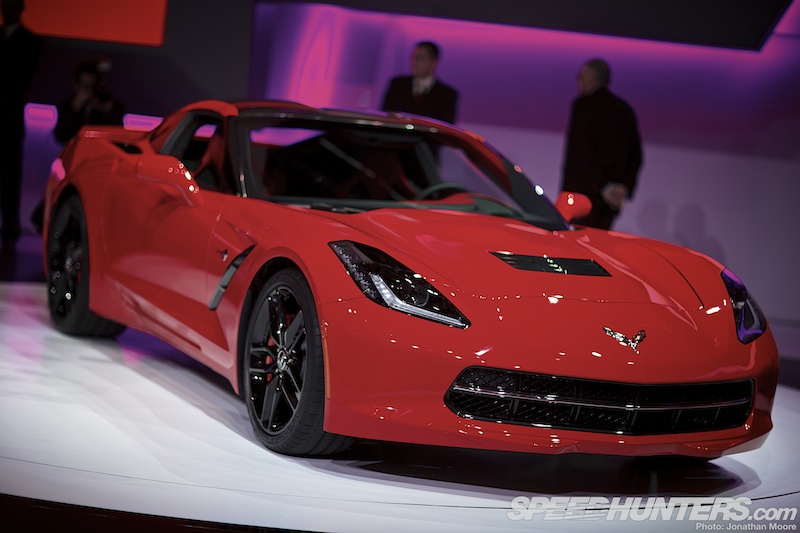
The design process for the C6’s replacement came at the most difficult time in GM’s history, when the company was forced to enter government-backed Chapter 11 bankruptcy – a process that saw the sale of closure of famous sub-brands including Saab, Pontiac and Hummer. But now we have said hello to the latest chapter in Corvette’s illustrious story: the C7, unveiled at the North American International Auto Show at Detroit in January.
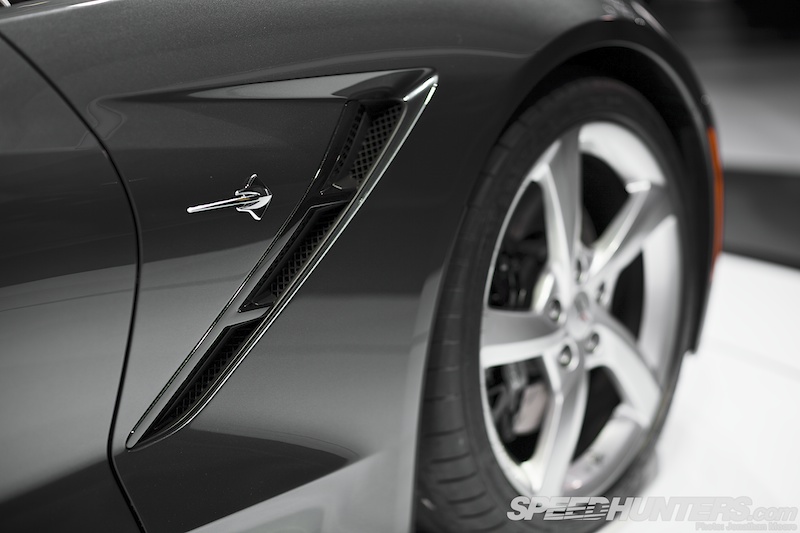
Again major changes were mooted, but the production model just couldn’t stay away from that traditional layout and the C7 even reintroduces the Stingray name. A 450hp small block V8 provides motivation, and composite materials are heavily utilised along with new technologies such as direct injection, active fuel management and variable valve timing. The Bowling Green factory, home to Corvette since 1981, is in the process of retooling to support the new model, with the first car due to roll off the production line in the autumn.
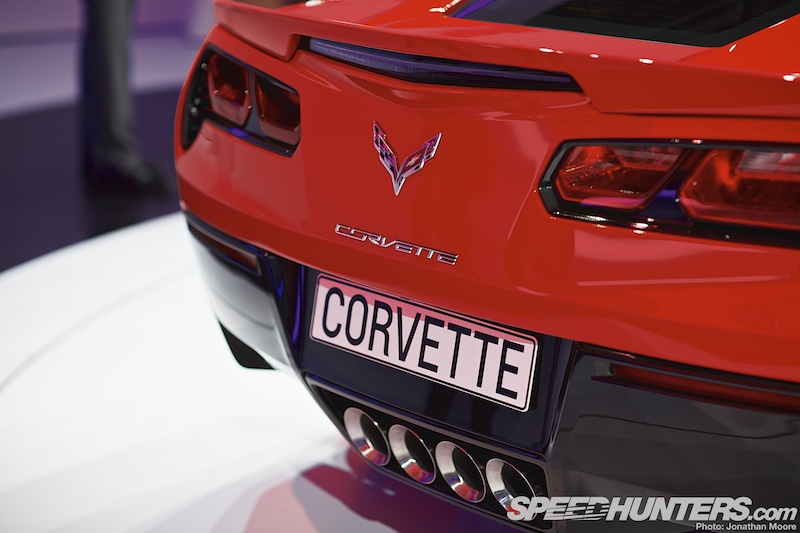
The design of the C7 has attracted positive and negative comments, but the Corvette faithful will rightly receive it with open arms: the latest addition to a tight-knit and loyal family. It’s that international popularity that imbues the Corvette with so much of its spirit: it’s a car has often resolutely sat outside the mainstream, and attracts loyalty like few others.
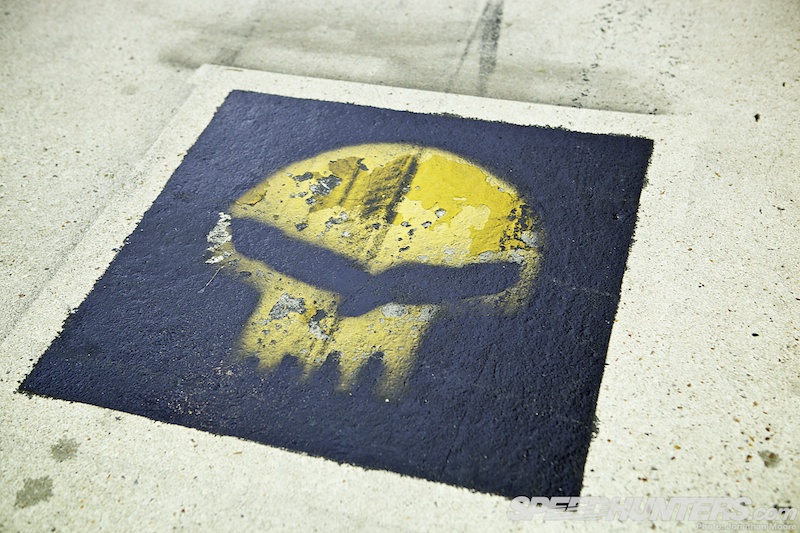
The Corvette brand has often survived despite GM’s management, kept going by its engineering team designing or even making prototypes in secret in its early days: a tight band dedicated to keeping the flame of Corvette alive no matter what, and a spirit that is still kept alive by the modern cars – especially at the track.
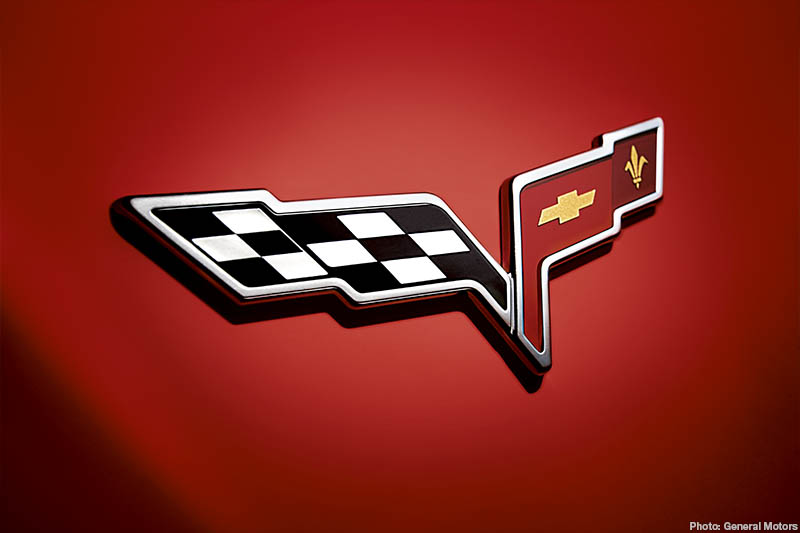
It’s a car that bucked a trend and set a new aspirational level for American drivers in the ’50s, came to dominate on both road and track, and now proudly goes head to head with the finest European offerings. The Corvette is the definition of an American classic.
Jonathan Moore






FYI,the c2 stingrays had a 5 year production run,not 4
Hi
Me gusta la historia
One c3 that should be mentioned was Zora duntovs ZL1 press test car, back in 69' it hit over 190 mph on track and they have to bolt the hood down because it came off during high speed testing! That's my favorite corvette, but there are so many that there's a favorite for everybody.
Muy increive la evolucion de este corvet
Jom jom jom
RACE IS MY LIFE
I like the fast
Amaan
Irfan
Amana
Irfan
SH
Gg
hooi
Mepagaiselcoche
They are cool aren't they
jdndodhjdbdjr bd dhd sye eibdbe je